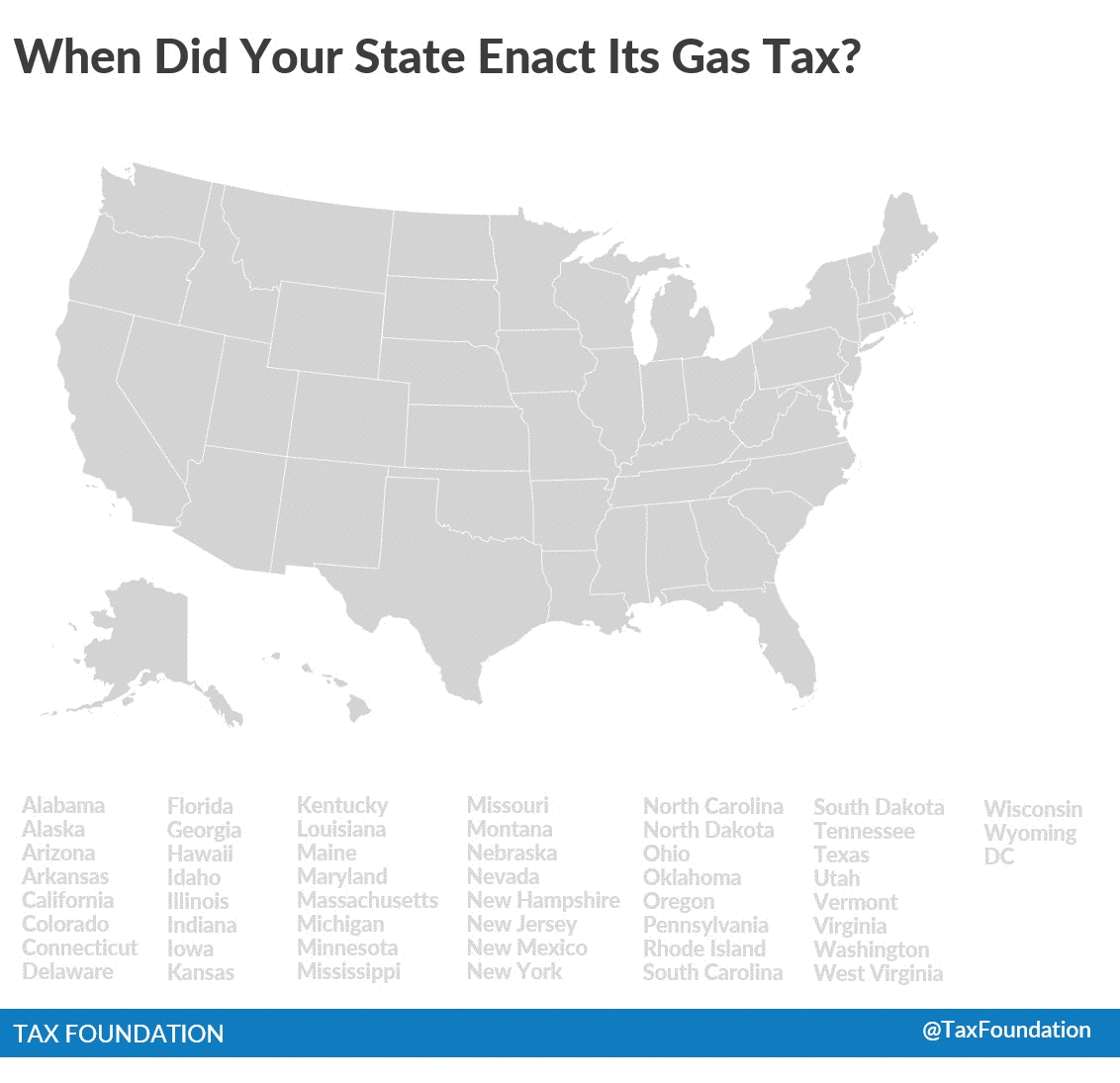This week’s map is a GIF showing the year each state adopted its gasoline excise tax. Oregon was the first state to do so in February of 1919 (Colorado, New Mexico, and North Dakota also enacted them later in the year). By 1929, every state in the union at the time had enacted a gas tax (Hawaii and Alaska had not yet gained statehood at this time).
(Click on the map to enlarge it. Reposting policy)
Source: Advisory Commission on Intgovernmental Relations, Significant Features of Fiscal Federalism (September 1995).
Why the sudden interest? Much can be explained by the rapid spread of automobile use and affordability in the early 1900s. According to the Department of Energy’s Transportation Energy Data Book, the real retail price of a new car fell substantially from the early 1910s to the late 1930s, while car ownership rose drastically.
As we wrote last year,
With this came an increasing interest in an expanded investment in roads at all levels of government. Before World War I, roads were entirely state- and local-government responsibilities… But by 1916, with the expansion of free rural delivery by the postal service and booming agricultural production…, a real constituency for public investments in roads was formed. Progressives seeking modernization, military officers concerned about military mobility, and farmers wanting free postal delivery and access to urban markets all aligned together, and the Federal Aid Road Act of 1916 was born.
The Road Act of 1916 required that every state have a highway department managed by engineering experts, and allocated federal funds based on postal service needs and population. But states could access those allotted funds only if they submitted plans for rural road development and matched Federal funds dollar for dollar. Moreover, roads were required to be public access, meaning that tolling was prohibited.
This plan led to many roads connecting rural areas to urban centers, but virtually no roads between major cities. The long-distance travel situation was so bad that when future President Dwight D. Eisenhower participated in a military “Transcontinental Motor Convoy” in 1919 to assess the nation’s roads, it took 65 days to get from Washington, DC to San Francisco. Several vehicles did not survive the journey, a number of soldiers were wounded, and over 80 bridges broke or collapsed.
The result was the passage of the Federal Highway Act of 1921, creating a map for a national road infrastructure that would connect urban centers across the U.S. This meant that by the early 1920s, state governments faced a larger constituency that desired urban roads and a federal government that was willing to match certain state road spending. Since states had yet to enact broad-based sales taxes or income taxes, they turned to taxing motorists to generate federal matching funds.
Read more on transportation taxes here.
Follow Liz on Twitter @elizabeth_malm.
Share this article